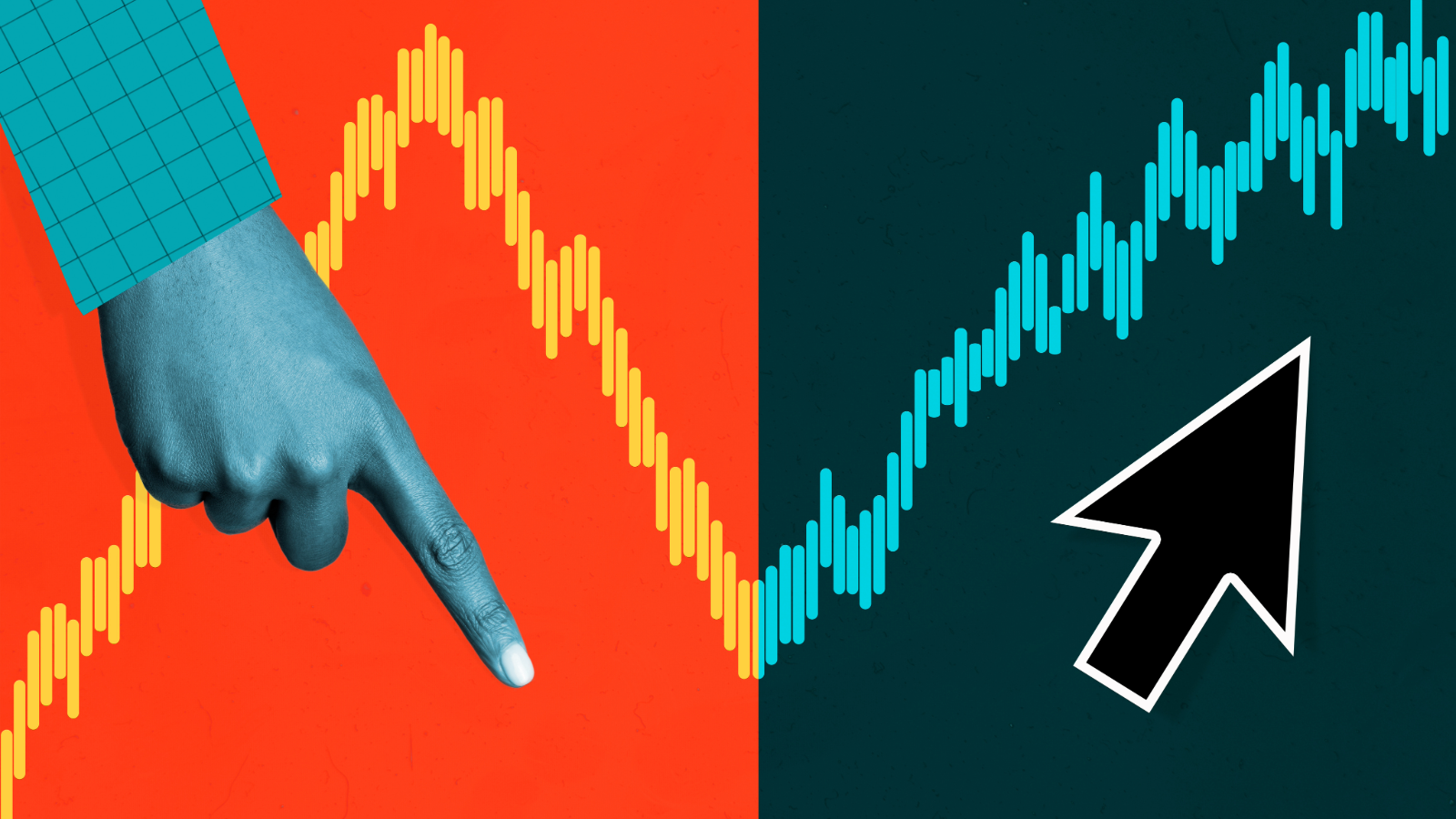Cost-Push Inflation vs. Demand-Pull Inflation: What’s the Difference?
How Can Inflation Be Good For The Economy?
Inflation does have some benefits. When more dollars are produced, spending increases which leads to more aggregated demand. This will result in higher production. Inflation also encourages more borrowing and lending which increases spending. For more information, watch this video.
Reviewed by Robert C. KellyFact checked by Jiwon MaReviewed by Robert C. KellyFact checked by Jiwon Ma
Cost-Push Inflation vs. Demand-Pull Inflation: An Overview
Two of the main drivers of inflation are cost-push inflation and demand-pull inflation.
Cost-push inflation is a decrease in the aggregate supply of goods and services stemming from an increase in the cost of production. Demand-pull inflation is an increase in aggregate demand. “Aggregate” means all four sections of the economy: households, businesses, governments, and foreign buyers.
Cost-push inflation and demand-pull inflation are two of the potential causes of inflation. The others are an increase in the money supply of an economy and a decrease in the demand for money.
Inflation is the rate at which the overall prices of goods and services rise. This, in turn, causes a drop in purchasing power.
The prices of individual goods and services rise and fall all the time. Inflation happens when prices rise across the economy to a measurable degree.
Key Takeaways
- Cost-push inflation is the decrease in the aggregate supply of goods and services stemming from an increase in the cost of production.
- Demand-pull inflation is the increase in aggregate demand.
- An increase in the costs of raw materials or labor can contribute to cost-pull inflation.
- An expanding economy, increased government spending, or overseas growth can cause demand-pull inflation.
Cost-Push Inflation
Aggregate supply is the total volume of goods and services produced by an economy at a given price level. When the aggregate supply of goods and services decreases because of an increase in production costs, it results in cost-push inflation.
Cost-push inflation means prices have been “pushed up” by increases in the costs of any of the four factors of production—labor, capital, land, or entrepreneurship—when companies are already running at full production capacity. Companies cannot maintain profit margins by producing the same amounts of goods and services when their costs are higher and their productivity is maximized.
The price of raw materials may also cause an increase in costs. This may occur because of a scarcity of raw materials, an increase in the cost of labor to produce raw materials, or an increase in the cost of importing raw materials. The government may also increase taxes to cover higher fuel and energy costs, forcing companies to allocate more resources to paying taxes.
To compensate, the increase in costs is passed on to consumers, causing a rise in the general price level: inflation.
The Demand Factor
For cost-push inflation to occur, demand for goods must be static or inelastic. That means demand must remain constant while the supply of goods and services decreases.
An example of cost-push inflation is the oil crisis of the 1970s. The price of oil was increased by OPEC countries while demand for the commodity remained the same. As the price continued to rise, the costs of finished goods also increased, resulting in inflation.
The price-quantity graph below demonstrates how cost-push inflation works. It shows the level of output that can be achieved at each price level. As production costs increase, aggregate supply decreases from AS1 to AS2 (given production is at full capacity), causing an increase in the price level from P1 to P2.
Companies that want to maintain or increase profit margins will need to raise the retail price paid by consumers, thereby causing inflation.
Demand-Pull Inflation
Demand-pull inflation occurs when there is an increase in aggregate demand, categorized by the four sections of the macroeconomy: households, businesses, governments, and foreign buyers.
When concurrent demand for output exceeds what the economy can produce, the four sectors compete to purchase a limited amount of goods and services. That means the buyers “bid prices up” again and cause inflation. This excessive demand, also referred to as “too much money chasing too few goods,” usually occurs in an expanding economy.
Important
In Keynesian economics, an increase in aggregate demand is caused by a rise in employment, as companies need to hire more people to increase their output.
The increase in aggregate demand that causes demand-pull inflation can be the result of various economic dynamics. For example, an increase in government spending can increase aggregate demand, thus raising prices. Another factor can be the depreciation of local exchange rates, which raises the price of imports and, for foreigners, reduces the price of exports.
As a result, the purchasing of imports decreases while the buying of exports by foreigners increases. This raises the overall level of aggregate demand, assuming aggregate supply cannot keep up with aggregate demand as a result of full employment in the economy.
Rapid overseas growth can also ignite an increase in demand as more exports are consumed by foreigners. Finally, if a government reduces taxes, households are left with more disposable income in their pockets. This, in turn, leads to an increase in consumer confidence that spurs consumer spending.
Supply and Demand
Looking again at the price-quantity graph, we can see the relationship between aggregate supply and demand. If aggregate demand increases from AD1 to AD2, in the short run, this will not change aggregate supply. Instead, it will cause a change in the quantity supplied, represented by a movement along the AS curve.
The rationale behind this lack of shift in aggregate supply is that aggregate demand tends to react faster to changes in economic conditions than aggregate supply.
As companies respond to higher demand with an increase in production, the cost to produce each additional output increases, as represented by the change from P1 to P2. That’s because companies would need to pay workers more money (e.g., overtime) and/or invest in additional equipment to keep up with demand.
Just like cost-push inflation, demand-pull inflation can occur as companies pass on the higher cost of production to consumers to maintain their profit levels.

Special Considerations
Governments and central banks have ways to counter both cost-push inflation and demand-pull inflation.
To counter cost-push inflation, supply-side policies need to be enacted with the goal of increasing aggregate supply. To increase aggregate supply, taxes can be decreased and central banks can implement contractionary monetary policies, achieved by increasing interest rates.
Countering demand-pull inflation would be achieved by the government and central bank implementing contractionary monetary and fiscal policies. This would include increasing the interest rate; the same as countering cost-push inflation because it results in a decrease in demand, decreasing government spending, and increasing taxes, all measures that would reduce demand.
What Causes Inflation?
Four main factors are blamed for causing inflation:
- Cost-push inflation, or a decrease in the overall supply of goods and services caused by an increase in production costs.
- Demand-pull inflation, or an increase in demand for products and services.
- An increase in the money supply.
- A decrease in the demand for money.
What Caused the Current Inflation Cycle?
The current inflation cycle is a worldwide phenomenon that has its roots in the Covid pandemic year of 2021. Global prices of certain key commodities rose sharply and kinks developed in the supply chain. By 2022, workers were successfully pressing for higher pay to cope with rising consumer prices. Price increases to cover the costs of higher pay pushed inflation higher.
That is classic cost-push inflation.
What Is a ‘Good’ Inflation Rate?
An annual inflation rate of 2% is considered optimal by the Federal Reserve, which sets that figure as its goal for the U.S. economy.
The Bottom Line
The law of supply and demand is the linchpin of a capitalist system. What could go wrong? Two big things that can go wrong are cost-push inflation and demand-pull inflation.
Cost-push inflation is caused by a shortage of supply. Demand-pull inflation is caused by an increase in demand. Both cause pain to consumers and businesses.
Read the original article on Investopedia.










